


Embracing Elegance On The Slopes
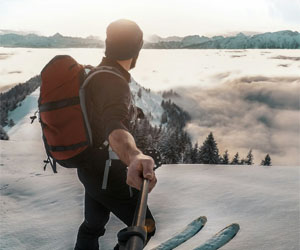
Skiing and snowboarding, aside from being thrilling winter sports, offer a canvas for self-expression and an opportunity to embody grace and style on the mountain. Graceful skiing and snowboarding are not just about conquering the slopes but also about creating a dance with the snow and celebrating the natural beauty of the wintry landscapes. In this article, we will explore how to achieve and appreciate the art of graceful skiing and snowboarding.
1. Perfect Your Technique: At the heart of graceful skiing and snowboarding is the mastery of fundamental techniques. To move with elegance on the slopes, you must have excellent balance, precise turns, and smooth transitions. Proper body positioning, weight distribution, and fluid movements are crucial. Beginners should take lessons from certified instructors to build a solid foundation.
2. Embrace Flow And Rhythm: Graceful riding is all about flow and rhythm. Work on linking your turns seamlessly, like a well-choreographed dance. A smooth transition from one turn to the next not only adds elegance to your style but also enhances your control and speed management.
3. Mindful Breathing And Relaxation: The connection between body and breath is vital for grace on the slopes. Relaxation and controlled breathing help maintain composure. Focus on deep, intentional breaths to stay calm and centered. Relaxed muscles translate to better balance and improved riding.
4. Choose The Right Terrain: Graceful skiing and snowboarding can be better expressed on certain terrains. Gentle, well-groomed slopes are ideal for practicing elegance. These areas allow you to perfect your form and experiment with your style. As you gain confidence, you can venture into more challenging terrain while still maintaining your grace.
5. Dress For Elegance: Your attire can contribute to your sense of grace. Opt for stylish, well-fitted ski or snowboard gear that not only keeps you warm and protected but also exudes a sense of refinement. Embrace colors and patterns that resonate with your personal style.
6. Develop Your Personal Style: Elegance in snow sports is also about finding your personal style and flair. Some riders prefer a classical approach with flowing turns, while others may embrace a more freestyle and creative style with tricks and jumps. Experiment and discover the style that resonates with you the most.
7. Enjoy The Scenic Beauty: Part of graceful skiing and snowboarding is the appreciation of the natural beauty surrounding you. Take a moment to absorb the breathtaking vistas and snow-covered mountains. Allow the serene surroundings to influence your movements and add depth to your experience.
8. Learn From The Masters: Watching and learning from experienced skiers and snowboarders can provide valuable insights into graceful riding. Study their techniques, mimic their movements, and adapt their styles to develop your grace on the slopes.
9. Safety Is Paramount: Always prioritize safety when pursuing grace in snow sports. Wear protective gear, including helmets and appropriate clothing, and be mindful of your limits. Graceful riding should never come at the expense of safety.
10. Keep Progressing: Graceful skiing and snowboarding are journeys of continuous improvement. Always strive to enhance your skills, try new terrains, and embrace different riding styles. Challenge yourself and savor the rewards of your growth.
Graceful skiing and snowboarding elevate these winter sports to an art form. By mastering techniques, embracing flow, and developing your own style, you can create a harmonious and elegant experience on the slopes. Remember that grace on the mountain is not just about conquering terrain; it's about creating a beautiful dance with the snow and celebrating the serenity and majesty of winter landscapes. Embrace the elegance, and let your passion for snow sports shine through your graceful movements on the snow-covered canvas.
An Adventure Beyond The Ordinary
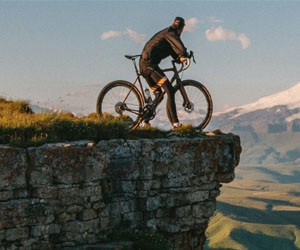 Mountain biking is more than just a physical activity; it's a mental challenge as well. Riders must constantly adapt to changing terrains, make quick decisions, and maintain focus. The need to read the trail ahead, choose the right line, and navigate obstacles requires a combination of skill and problem-solving that keeps the mind engaged and sharp.
Mountain biking is more than just a physical activity; it's a mental challenge as well. Riders must constantly adapt to changing terrains, make quick decisions, and maintain focus. The need to read the trail ahead, choose the right line, and navigate obstacles requires a combination of skill and problem-solving that keeps the mind engaged and sharp.
What sets mountain biking apart is the diverse range of terrains it offers. Riders can explore lush forests, conquer arid deserts, climb mountain slopes, or take on technical urban trails. This variety ensures that there's a trail for every skill level and a challenge for every rider, from beginners to seasoned pros.
The thrilling world of mountain biking also encourages a deep connection with the outdoors. It takes riders to remote and breathtaking natural settings that are often inaccessible by other means. From the tranquility of forest trails to the majesty of mountain vistas, mountain biking provides a front-row seat to the beauty of the natural world.




A Synergistic Relationship
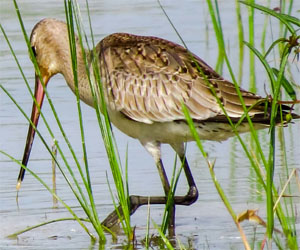 Fostering A Love For Nature: Birdwatching introduces people to the beauty and wonder of the avian world. It's a gateway to a lifelong love affair with nature. By fostering an appreciation for birds and their habitats, birdwatching enthusiasts are more likely to become advocates for conservation.
Fostering A Love For Nature: Birdwatching introduces people to the beauty and wonder of the avian world. It's a gateway to a lifelong love affair with nature. By fostering an appreciation for birds and their habitats, birdwatching enthusiasts are more likely to become advocates for conservation.
Citizen Science: Birdwatchers often contribute to valuable citizen science projects. Organizations like the Audubon Society and eBird encourage birdwatchers to record their sightings and observations. These data provide crucial insights into bird populations, migration patterns, and habitat trends, aiding in scientific research and conservation planning.
Monitoring Bird Populations: Birdwatchers, with their keen eyes and field experience, are excellent at monitoring bird populations. They can detect fluctuations in bird numbers, identify rare or threatened species, and report unusual events like mass migrations or bird die-offs. This information is vital for conservationists to understand the health of ecosystems.
Habitat Protection: Birdwatchers often advocate for the preservation of important bird habitats. Birding communities and organizations engage in campaigns to protect critical nesting areas, stop deforestation, and promote the establishment of nature reserves. This grassroots effort can have a significant impact on local and global conservation initiatives.
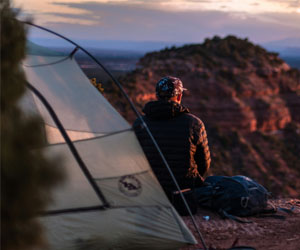 Camping allows you to discover the beauty of nature up close and personal. You'll have the chance to witness breathtaking sunrises and sunsets, where the sky is painted in hues of gold and pink. You can explore winding forest trails that lead to hidden waterfalls, or gaze in wonder at the star-studded night sky, free from the glare of city lights. The beauty of the natural world reveals itself in the vibrant colors of wildflowers, the crystal-clear waters of mountain streams, and the towering majesty of ancient trees.
Camping allows you to discover the beauty of nature up close and personal. You'll have the chance to witness breathtaking sunrises and sunsets, where the sky is painted in hues of gold and pink. You can explore winding forest trails that lead to hidden waterfalls, or gaze in wonder at the star-studded night sky, free from the glare of city lights. The beauty of the natural world reveals itself in the vibrant colors of wildflowers, the crystal-clear waters of mountain streams, and the towering majesty of ancient trees.
Furthermore, camping offers a return to the basics of life. With limited access to modern conveniences, you'll learn to appreciate the fundamental elements that sustain us. Building a campfire, cooking a meal over an open flame, and finding shelter in a simple tent or under the open sky harken back to our most primal instincts. This connection to the essentials of survival fosters a sense of self-sufficiency and a deeper appreciation for the resources that nature provides.
Discovering the beauty of camping is also about reconnecting with friends and family. Campfires become gathering places for stories and laughter, where the bond of shared experiences is strengthened. Whether it's toasting marshmallows, playing card games, or simply enjoying each other's company, camping offers a unique setting for building and deepening relationships.
As you venture into the world of camping, you'll find that it's not just about a temporary escape; it's a profound journey that enriches the soul and nurtures a lasting connection to the natural world.
A Model For Sportsmanship
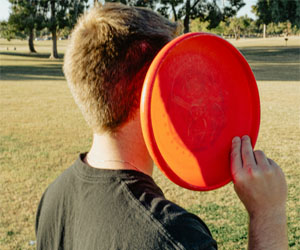 Spirit of the Game, as it's known in Ultimate circles, is a central tenet of fair play. It encourages players to uphold the highest standards of integrity and respect. The official rules of Ultimate state that "highly competitive play is encouraged, but never at the expense of the bond of mutual respect between players, adherence to the agreed-upon rules of the game, or the basic joy of play." This reflects the idea that winning is important, but not at the cost of the sport's core values.
Spirit of the Game, as it's known in Ultimate circles, is a central tenet of fair play. It encourages players to uphold the highest standards of integrity and respect. The official rules of Ultimate state that "highly competitive play is encouraged, but never at the expense of the bond of mutual respect between players, adherence to the agreed-upon rules of the game, or the basic joy of play." This reflects the idea that winning is important, but not at the cost of the sport's core values.
The concept of Spirit of the Game goes beyond the written rules and extends to the spirit in which the game is played. Players are expected to acknowledge their own infractions and resolve disputes amicably with their opponents. This self-policing approach creates an environment of trust and sportsmanship that is rare in competitive sports.
Ultimate Frisbee also places a strong emphasis on gender equity and mixed-gender play. Teams are required to maintain a balanced gender ratio on the field, promoting inclusivity and equality. This commitment to fair play extends to creating opportunities for all players, regardless of gender, to contribute to the game and succeed.
Embracing The Thrill Of The Unknown
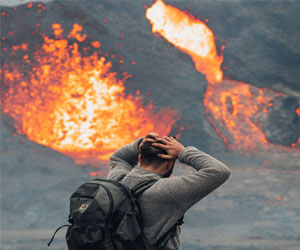 Rekindling Curiosity: Rediscovering the art of exploration is about rekindling curiosity, embracing the unknown, and seeking out new experiences. It's a reminder that there is always more to learn, discover, and understand, both about the world and ourselves.
Rekindling Curiosity: Rediscovering the art of exploration is about rekindling curiosity, embracing the unknown, and seeking out new experiences. It's a reminder that there is always more to learn, discover, and understand, both about the world and ourselves.
Exploring The Familiar And Unfamiliar: Exploration doesn't always require venturing into remote wilderness or uncharted waters. It can start with exploring the familiar places around us. Take a different route to work, visit a neighborhood you've never been to, or try a new cuisine. Familiar exploration can help cultivate a sense of wonder and openness to the world.
Embracing The Thrill Of The Unknown: One of the most enticing aspects of rediscovering the art of exploration is the thrill of the unknown. Whether it's a spontaneous road trip, a journey into the wilderness, or delving into a new field of study, the exhilaration of stepping into uncharted territory is invigorating.
Facing Challenges And Overcoming Obstacles: Exploration often involves facing challenges and overcoming obstacles. These trials not only build resilience but also lead to personal growth. The lessons learned while navigating through unfamiliar situations can be transformative.
Connection With Nature: Exploration frequently involves connecting with nature, whether it's hiking through forests, diving into the depths of the ocean, or stargazing in remote locations. This connection with the natural world can be spiritually fulfilling and grounding.
Cultivating A Lifelong Learning Mindset: Rediscovering the art of exploration fosters a lifelong learning mindset. It encourages us to ask questions, seek answers, and continually expand our knowledge and horizons. It's a reminder that the pursuit of knowledge is an endless and rewarding journey.
Strengthening Relationships: Exploration often leads to shared experiences. Whether with friends, family, or fellow adventurers, the connections formed during exploratory journeys can be deeply meaningful and create lasting memories.
A Journey Of Progress In Skiing And Snowboarding
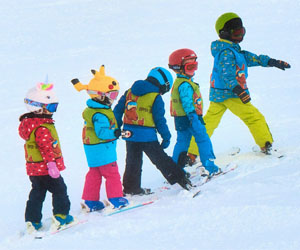 The Beginner Stage:
The Beginner Stage:
As a novice, the journey begins with a focus on mastering the fundamental skills. For both skiing and snowboarding, this includes:
1. Equipment Familiarization: You'll become acquainted with your gear, which includes skis, boots, and poles for skiing, or a snowboard and boots for snowboarding. Proper equipment is crucial for safety and performance.
2. Balance And Stance: Finding the right balance and learning how to stand and glide on your equipment is the cornerstone of successful skiing and snowboarding. Beginners often start by practicing on gentle slopes to develop their balance.
3. Turning And Stopping: Learning how to turn and stop effectively is key to controlling your speed and navigating the slopes safely. Novices generally begin with wedge turns in skiing and heel-side edge control in snowboarding.
4. Snowplow And Basic Maneuvers: In the beginner stage, you'll use the snowplow (or "pizza" for skiers) to control your speed and make controlled descents. Snowplow turns and basic maneuvers help you navigate the slopes with confidence.
Intermediate Progression:
As you gain confidence and proficiency, you'll transition to the intermediate stage, where you can explore more challenging terrain and techniques:
1. Parallel Turns: For both skiing and snowboarding, transitioning from wedge or heel-side edge turns to parallel turns is a significant milestone. This allows for smoother and more efficient maneuvering.
The Drive For Excellence
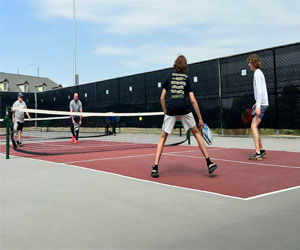 Skill Development: Pickleball requires a unique set of skills that combine the finesse of table tennis, the agility of badminton, and the strategic elements of tennis. Competitive players dedicate significant time to developing these skills, including shot placement, spin control, and precision. The pursuit of mastery in these areas is a key driver of competitiveness.
Skill Development: Pickleball requires a unique set of skills that combine the finesse of table tennis, the agility of badminton, and the strategic elements of tennis. Competitive players dedicate significant time to developing these skills, including shot placement, spin control, and precision. The pursuit of mastery in these areas is a key driver of competitiveness.
Strategic Play: While pickleball is known for its social and recreational appeal, competitive players bring a new level of strategic thinking to the game. Each point is a mini-battle of wits, with players analyzing their opponents' weaknesses, anticipating shots, and creating opportunities for winning plays. Strategic innovations such as the third shot drop and stacking are embraced to gain a competitive edge.
Tournaments And Rankings: The competitive aspect of pickleball is exemplified by the numerous tournaments held worldwide, attracting players who aim to compete at the highest levels. These events include local, regional, national, and international competitions. The excitement and prestige associated with tournaments drive players to continually refine their skills and seek recognition in the form of rankings and titles.
Team Play: Pickleball is often played in doubles format, which adds a team dynamic to the sport. Competitive players not only seek individual excellence but also thrive on building strong partnerships with their playing partners. The ability to coordinate strategies, cover the court effectively, and complement each other's strengths becomes a critical element of success in doubles play.